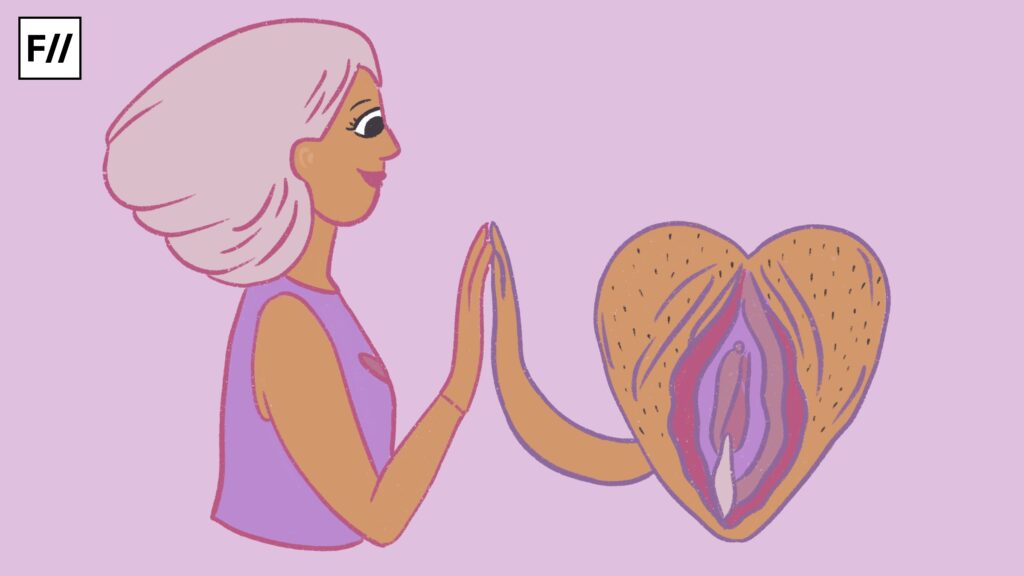Oscar Wilde once said “everything in the world is about sex – except sex. Sex is about power”. This statement has stood the test of time especially in a Brahmanical Patriarchal society such as India, wherein patrilineal succession along with caste purity are the essential organising features.
Brahmanical-Patriarchal Social Order
While patrilineal succession is a feature of all patriarchal societies including India, the uniqueness of the Hindu society lies in also maintaining caste lines, that is practicing endogamy, and consequently the notion of ‘blood purity’. As understood through the savarna lens, the Hindu society is largely divided into four broad castes (varnas) in ascending order – Brahman, Kshatriyas, Vaishyas and Shudras. As Brahmins lie at the top of the pyramid, they have established codes of conduct and way of life for everyone who they believe fall under the varna system, and the legitimacy of their superiority is maintained through the notions of caste purity. Therefore, as captured by Dr Uma Chakravarti, the organising features of the Hindu society is of gender hierarchy and caste hierarchy, both of which is maintained through the domination and oppression of women. Since women hold reproductive powers, it becomes necessary to exert sexual control of women to maintain both patrilineal succession and caste purity. Hence, female sexuality lies at the core of the Hindu society wherein the family/community/caste honour is intricately tied with a woman’s ‘honour’ and honour is viewed through the idea of ‘purity’, that is being sexually untouched or inactive. Since caste purity is contingent on purity of women, in instances where women participate in exogamous sexual/romantic relationships, family honour is restored by violating the woman’s body, essentially murdering her, therefore leading to the practice of ‘honour killings’.
Also read: Handmaid’s Tale In The Hindutva Manu Rashtra
It is then fair to say that the structure of the Indian society not only places a huge burden on female sexuality, it provides no space for women to explore their sexuality freely. Therefore, female sexuality is only perceived as a tool for upper-caste men to display and maintain their power and as will be argued below, ascribing to such a notion has devastating effects on female sexuality with long-lasting effects on sexual well-being.
Heteronormative cultural sexual script
To begin with, the idea of virginity is very closely associated with blood purity as a woman is supposed to have sexual intercourse for the first time only after marriage to ensure patrilineal succession and blood purity. Women are expected to stay ‘virgin’ until they are married, and this is tested through the myth around ‘the breaking of the hymen’ after first sexual intercourse. It is popularly (and wrongly) believed that the hymen breaks for the first time when a woman has penetrative sex, and this is visible through bleeding due to the breakage of the hymen. The myth has continued to prevail even though it has medically been proven to be un-scientific. The hymen is a tissue in the vagina that has holes and does not ‘break’. Even though many experts have spoken about the myth, it continues to circulate as an informal ‘fact’ with several women being subjected to “virginity tests” on the night of the marriage. This widespread belief in virginity and hymen as a symbol of purity is indicative of how strong the patriarchal heteronormative cultural script is in society, holding power to override factual information in popular narratives around sex.
Moreover, since the Hindu society is organised on patrilineal lines, this structure further provides space to view men’s sexuality as superior to female sexuality as a man’s ‘blood’ is carried forward in family lines. It is not uncommon to view men as bearers of sexuality and women’s role is often limited to fulfilling the man’s sexual needs. One of the ways in which this viewpoint is practiced is through the assumption that ‘sex’ implies penile-vaginal penetration with different names given to other aspects of sexual pleasure such as ‘oral sex’ or ‘foreplay’.
Equating sex with penile-vaginal penetration not only leaves out understanding sexual pleasure for people from the queer community, it also places pressure on women to believe that penile-vaginal penetration should be pleasurable for them just because it is a reliable way for men to orgasm during sex. This idea in turn gives rise to the ‘orgasm gap’, a term that was coined by the Dr Laurie Mintz. Several studies have found that cis-heterosexual women have least orgasms during sex.
Also read: The Orgasm Gap: How Body Shaming Affects Women’s Sexual Experiences
Equating sex with penile-vaginal penetration not only leaves out understanding sexual pleasure for people from the queer community, it also places pressure on women to believe that penile-vaginal penetration should be pleasurable for them just because it is a reliable way for men to orgasm during sex. This idea in turn gives rise to the ‘orgasm gap’, a term that was coined by the Dr Laurie Mintz. Several studies have found that cis-heterosexual women have least orgasms during sex.

While it is true that not everyone necessarily orgasms every time during sex, cis-heterosexual women are least likely to orgasm, with lesbian and bisexual women having significantly more orgasms during sex. Since penile-vaginal penetration is more pleasurable for men, it leaves out stimulating the clitoris for women which is supposed to be the most pleasurable point in a woman’s body. In fact, the clitoris is the only organ in the body that is designed solely for pleasure, and it is this organ that has been consistently denied any space in our vocabulary on sexual pleasure. In fact, I recently saw multiple videos on social media wherein men were asked to locate the clitoris in the vulva, and I was aghast to find out that majority of them did not know where it was located. I then wonder if the myth of ‘men being more sexual than women’ arises from the fact that cis-heterosexual women more often than not have bad sex with a clear lack of focus on female-desired sex, and therefore are not inclined to have sex that often. Therefore, I strongly believe it is the need of the hour to understand the purpose and origin of several myths that exist around both male and female sexuality and challenge and deconstruct the implicit assumptions that commonly exist.
Impact of heteronormative sexual script on female sexuality
Since sexual activity is closely guarded to maintain caste lines, most adolescents do not receive crucial information about their body and sexuality while growing up as there is a severe lack of sexuality education in India. Having no reliable space for adolescents and even adults to learn about their anatomy and sexuality, it poses a huge threat to their sexual well-being as we are not aware of basic information such as the harmful effects of STIs and HPV, thereby putting ourselves in danger of developing diseases and disorders. Upon having conversations with friends within my circle, we realised how we never got information on vaccinations such as HPV through doctors or parents and thereby we have always been in danger while engaging in sexual activity. Moreover, as there is stigma around pre-marital sex, it is often embarrassing and hard to purchase condoms or morning-after-pill at shops as women are often judged or denied services. Therefore, the lack of sexuality education along with the stigma around sex poses a huge threat to ensure sexual well-being and safety which merits immediate attention and demand.
Furthermore, the lack of understanding of bodily anatomy is also visible through the common misconception of equating ‘vulva’ with ‘vagina’ with everything about women’s genitals being subsumed under ‘vagina’. The female genital consists of labia (the folds you see in the vulva), anus, vagina (referring to vaginal opening and canal), urethra and the clitoris. This misconception of calling vulva vagina holds value while addressing sexual pleasure and well-being because there are other parts of the female genital beyond the vagina that is pleasurable for women such as the clitoris that is denied existence. As mentioned earlier, I believe the prevalence of the term ‘vagina’ is also a reflection of male sexual pleasure being considered more important than female sexual pleasure as men regard vagina (and consequently penile-vaginal penetration) as crucial for sexual pleasure. It therefore becomes important to call into question the prevalence of male-centric understanding of female genitals and unpack its effects on female pleasure and well-being.

As demonstrated above, female sexuality holds not just little space but also a very skewed understanding in the savarna culture which I believe is very strongly linked to the Brahmanical patriarchal idea of maintaining caste purity. It is the origin of this idea that prohibits women from understanding their own body and enjoying sexual health and rights which are universal and should be available to everyone.
As demonstrated above, female sexuality holds not just little space but also a very skewed understanding in the savarna culture which I believe is very strongly linked to the Brahmanical patriarchal idea of maintaining caste purity. It is the origin of this idea that prohibits women from understanding their own body and enjoying sexual health and rights which are universal and should be available to everyone. I therefore believe not only is it essential to challenge the Brahmanical patriarchal order but actively work towards dismantling the idea of caste within the Hindu society if female sexuality is to attain importance and prominence in our common understanding of sexuality and sexual pleasure.
Saakshi Saxena is an intersectional feminist researcher who recently graduated from the Institute of Development Studies with a master’s in Gender and Development. She is currently collaborating with Dr Pauline Oosterhoff and working as a guest editor on a special issue titled ‘Survivor Strategies Rebuilding intimate relations and sexual wellbeing following sexual violence’ in the journal Culture, Health and Sexuality. The focus of her research during her master’s dissertation was on exploring how (cisgender – heterosexual) women practice sexual rights and achieve sexual well-being after facing sexual assault. Her expertise, therefore, lies in exploring how women’s sexuality is perceived within patriarchy, the varied ways in which trauma impacts women’s sexuality and how women integrate the trauma of violence and achieve sexual pleasure and well-being. Apart from her interest in research, she is also a tv-show and movie buff, known infamously within her friend circle for having exhausted most of Netflix’s recommendations. You can find her on LinkedIn.




